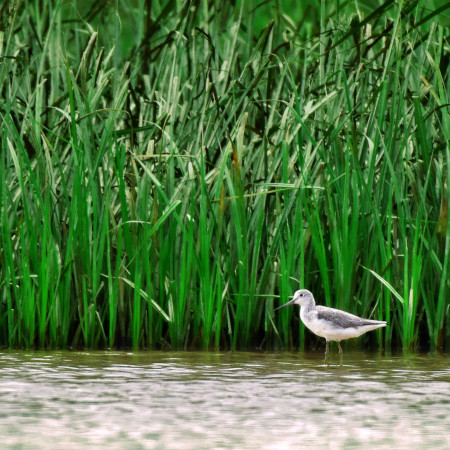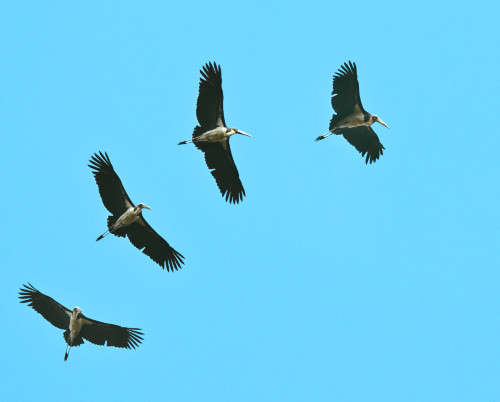February 05, 2021
The Common Greenshank (Tringa nebularia), which was last sighted in the area 16 years ago, was identified by the Restorasi Ekosistem Riau (RER) team during the Asian Waterbird Census (AWC) 2021 in the Kampar Peninsula.
AWC is a global activity that is conducted every year. In Indonesia, it’s coordinated by Wetlands International.
Usually conducted in the second and third week of January, AWC helps efforts to conserve waterbirds and wetlands by counting the numbers of the various species.
RER has been participating in this survey since 2017. This year, five RER ecology staff worked near the Kampar River from 19 to 21 January.
Common Greenshank Migrated from Eurasia

This year the RER team found their presence in a habitat near the Kampar River – a very exciting discovery, since they were last spotted in the region in 2004.
These birds are known for their striped tails. With their greenish legs, this bird can move swiftly when they are feeding in the wetland.
Common Greenshank diet includes invertebrates such as crustaceans, insects, small fish, caterpillars and molluscs.
This species has a body size of about 32cm. Its back and wings are flecked with dark grey while its chest, abdomen and lower tail are colored white.
The Greenshank will migrate to Indonesia and southeast Asia during when winter starts in northern Eurasia. This is the right moment if we want to meet them.
Even though it is considered as Least Concern (LC) by the IUCN, its hunting in the countries situated in their migratory corridor should be taken quite seriously.
Monitoring of Protected Waterbird Species
During the 2019 AWC, the RER team recorded 128 waterbirds near the Kampar River, but in 2020 we recorded 444 birds from 11 species. This year we found 163 birds from 10 species.
On the first day of observation, the most frequently sighted bird was the Purple Heron Cangak Merah (Ardea purpurea) with a total of 112.
The RER team also found other Tringa birds, such as the Common Sandpiper (Actitis hypoleucos), during the two days of observation.
Another interesting finding was the Lesser Adjutant (Leptoptilos javanicus) which is categorised as Vulnerable in the IUCN Red List of Threatened Species.

This species can reach up to 110-120 cm tall with wingspan of around 210 cm and weight of 5kg. It’s distinctive because it runs before flying, like an aircraft accelerating down the runway.
Spotting the Lesser Adjutant in this year’s AWC has definitely boosted the team’s spirit!
Under this reason, RER plans to continue its participation in the following AWCs.
See you next year!